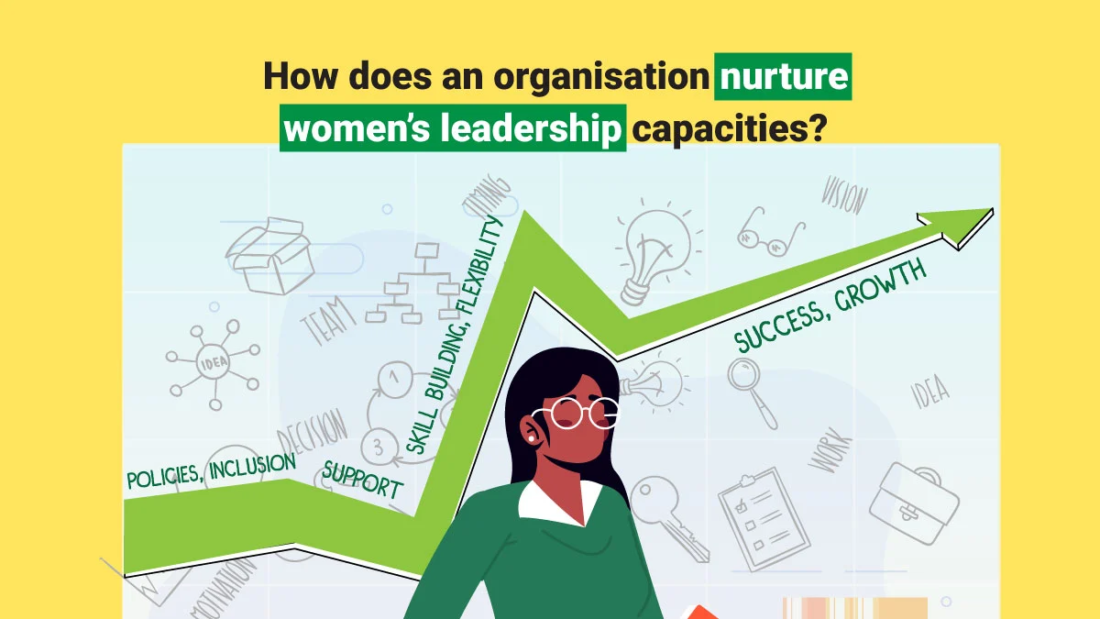We know that the percentage of women leaders within organisations, especially those that occupy coveted c-suite positions is much lesser than that of their male counterparts.
There are many ways in which an organisation might support and empower women employees. To read more about these measures click here.
However, when women are in a position where their next step would be in a leadership role, there are several strategies that organisations can recruit to nurture their leadership capacities.
1) Training and awareness programs:
Invest in training and capacity building programs that provide opportunities for:
– High potential women employees to stay ahead in the curve
– Becoming aware of internalized bias by unlearning and learning concepts regarding gender and gender norms
– Developing tools and strategies to combat limiting beliefs, negative self-talk
– Developing self-care practices and bringing authentic self to work
– Developing and honing leadership styles and skills
2) Access to mentors:
It is extremely important to create access to a network of support for professional development and resolution of any issues coming up.
Furthermore, a formal mentorship program can be instituted that pair women with other male and female leaders internally. This could support knowledge sharing and learning through experience sharing, as well as support with conflict or any demands that may arise in the context of work.
3) Networking:
Creating safe spaces for women across diverse backgrounds to connect and build a network of support. For example, women returning to work, single women, working mothers, caregivers, etc.
4) Access to equal opportunity:
Investing in women’s leadership at work may also require organisations and decision makers to take a close look at the internal policies and practices that may inadvertently keep women out of leadership positions and adopt targeted approach that support women’s growth at work. Also, it may be prudent for decision makers to align strategies congruent with laws of the land, values and culture of the organization.
5) Celebrating and making visible success stories of women in leadership positions. It may instil faith in the organisation that it is willing to walk the talk when it comes to nurturing women’s leadership.
6) Encourage access to Mental Health Support:
The reality of women’s lived experiences is that though things are changing, there are still situations where women may be at risk of violence, abuse and discrimination, even at work. Even the subtle microaggressions and micro incivilities that women face in the form of “jokes”, “advice” and unfortunately even through “feedback” channels can serve to decrease morale, increase the chances of burnout and in extreme cases lead to mental health conditions like PTSD.
In moments like this being able to access therapeutic support may go a long way in being able to empower women to understand situations without self-blame, guilt and self-deprecation which in turn may build resilience and support healthy coping mechanisms.
 Cart is empty
Cart is empty 

